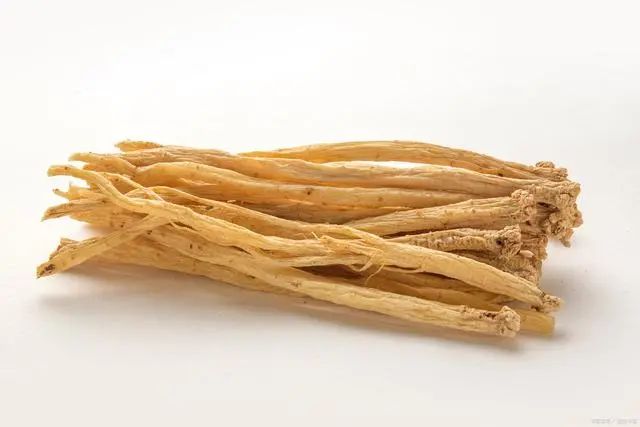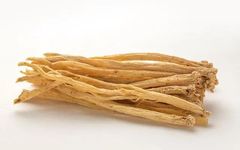Codonopsis pilosula (党参), with a neutral nature and sweet taste, is associated with a legend involving the Eight Immortals, where Tie Guai Li and Lü Dongbin bet on who could run faster. Tie Guai Li chewed on a plant while racing, and despite the exertion, he remained unfazed, prompting Lü Dongbin to inquire about the plant. Unable to get an answer, Lü Dongbin asked a woodcutter, who revealed, “This is a divine herb that grants strength, named after its origin in Shangdang County.”

This article will detail the nutritional components, efficacy, and daily consumption methods of Codonopsis pilosula.
1. Nutritional Components of Codonopsis Pilosula
Codonopsis pilosula is rich in various nutrients, including polysaccharides, saponins, and flavonoids. These components provide abundant nutrition to the human body. Polysaccharides are one of the main components of Codonopsis pilosula, known for enhancing immunity and combating fatigue; saponins exhibit antioxidant properties and various biological activities; flavonoids are protective for the heart.
2. Efficacy of Codonopsis Pilosula
- Tonifying Qi and Nourishing Blood: Codonopsis pilosula is effective in tonifying Qi and nourishing blood, useful for conditions like Qi deficiency fatigue and blood deficiency with pallor. It helps those who are weak and fatigued to recover their strength and spirit.
- Strengthening the Spleen and Benefiting the Stomach: Codonopsis pilosula can strengthen the spleen and benefit the stomach, enhancing digestive function. It has a positive effect on conditions of spleen and stomach deficiency and indigestion.
- Moistening the Lungs and Generating Fluids: Codonopsis pilosula has the effect of moistening the lungs and generating fluids.
- Enhancing Immunity: The polysaccharides in Codonopsis pilosula can significantly enhance the body’s immunity.
- Antioxidant: The flavonoids in Codonopsis pilosula have antioxidant effects, capable of eliminating free radicals in the body.
- Cardiovascular Protection: The saponins in Codonopsis pilosula can protect cardiovascular health.
3. Daily Consumption Methods of Codonopsis Pilosula
- Codonopsis Pilosula Tea: Slice or powder Codonopsis pilosula and brew it with boiling water. This can help tonify the middle, boost Qi, and refresh the mind. The tea can be re-brewed until the flavor diminishes.
- Codonopsis Pilosula Congee: Add an appropriate amount of Codonopsis pilosula when cooking congee, which positively affects the regulation of the spleen and stomach and enhances physical strength. Ingredients like red dates and longan can be added to increase the nutritional value and flavor of the congee.
- Codonopsis Pilosula Soup: Cut Codonopsis pilosula into small pieces and cook it with other ingredients in a pot. After boiling, simmer for 1-2 hours. This soup can include chicken, pork ribs, or lean meat, and can also incorporate red dates and goji berries to enhance its nutritional value and flavor, beneficial for tonifying deficiency and boosting Qi and blood.
4. How to Select and Store Codonopsis Pilosula
- Appearance: High-quality Codonopsis pilosula should have thick roots, a lion’s head, and transverse ring patterns, with a soft, elastic texture and a yellow-brown or gray-brown surface with fine transverse and longitudinal grooves. If there are obvious black spots, insect damage, or breakage, it may be of inferior quality.
- Smell: Good Codonopsis pilosula should have a strong aroma and sweet taste, with a preference for those that leave no residue when chewed. If there is an off or moldy smell, it may be spoiled or damp.
- Origin: The quality and efficacy of Codonopsis pilosula may vary by region. Generally, those from Gansu and Shanxi are of better quality.
- Choose Reputable Sources: When purchasing Codonopsis pilosula, it is best to choose reputable vendors to ensure product quality and safety. Due to its high sugar content, it should be stored sealed, moisture-proof, and kept dry.
5. Precautions for Consuming Codonopsis Pilosula
- Avoid Excessive Consumption: Although Codonopsis pilosula has certain nourishing effects, excessive consumption may lead to discomfort, such as dry mouth, tongue, and heat.
- During Cold, Fever, or Cough: It is not suitable to consume Codonopsis pilosula during these conditions.
- Allergic Individuals: Those allergic to Codonopsis pilosula should avoid it to prevent allergic reactions.
- Avoid Certain Foods: Codonopsis pilosula should not be consumed with certain foods like Rhizoma et Radix Euphorbiae or strong tea, and should not be eaten with radishes.
- Special Populations: Pregnant women, nursing mothers, the elderly, and children should consume Codonopsis pilosula under the guidance of professionals based on their individual constitution and health status.

